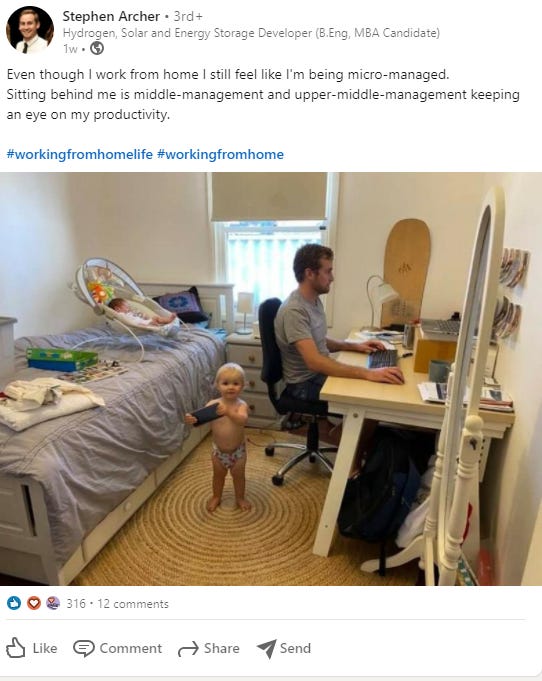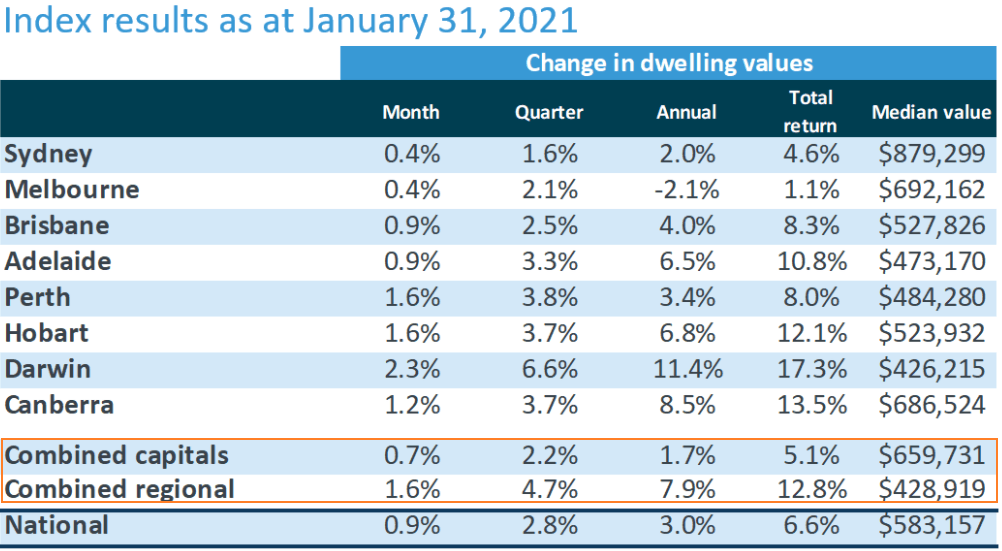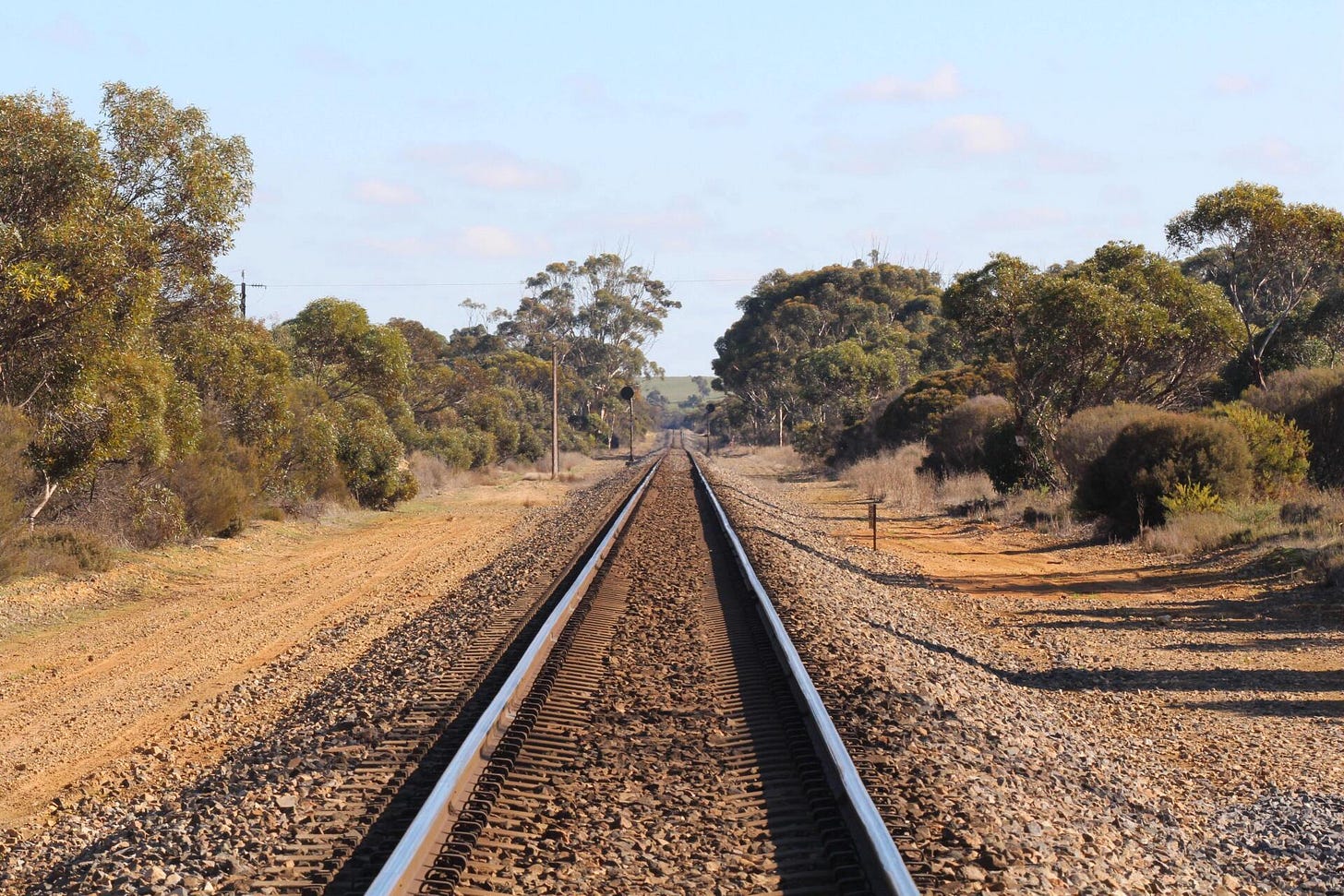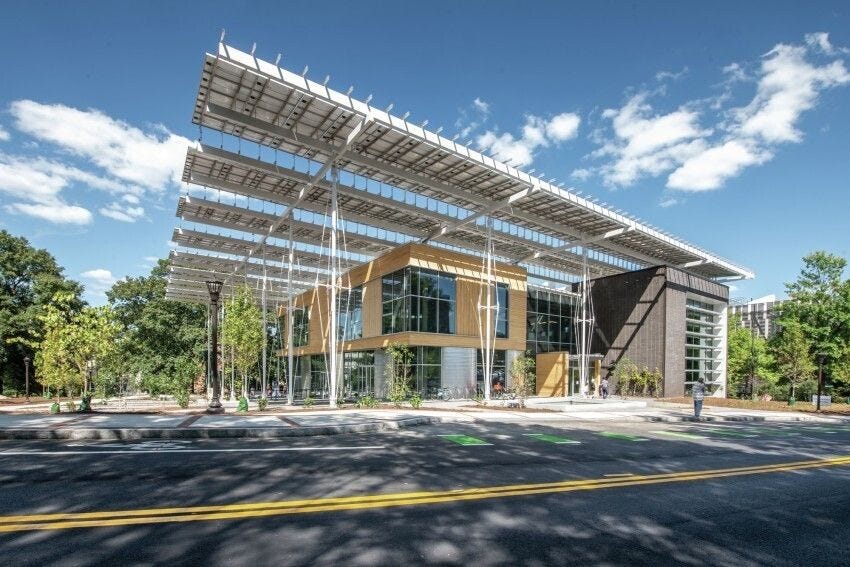Power hungry
This issue was originally sent as email newsletter on 5th Feb 2021Hi there,
Welcome back to Makao notes—a newsletter to share our take on the stories dominating sustainability and the built environment.
How was your first month in 2021?
With a lot to digest and think about—I wish you all the necessary breathing space to keep a clear head and explore the larger context. And to have a hopeful month ahead.
Today we'll take a peek at some trends accelerated by the work from home arrangements and the infrastructure under them. Then we'll zoom around the globe to look at cities dangling offers to attract remote workers.
Read on...
- Kelvin
THE STORY IN NUMBERS
415.55
As of 2nd Feb 2021—the concentration of Carbon Dioxide in the atmosphere was 415.55 ppm. A year ago the concentration was 414.32 ppm. The concentration limit of the UNFCCC Paris Agreement is 430 ppm (for 1.5°C warming) and 450 ppm (for 2°C).
5.1
Melbourne dethroned Sydney to become Australia's largest CBD in 2020. Research by JLL shows Melbourne's total office stock now sits at 5.1 million sqm. Edging out Sydney's 5.0 million sqm. Both cities are comparable in size to Berlin (4.5 million sqm), Barcelona (4.9 million sqm), and Madrid (6.5 million sqm).
40,000
'Despacito' broke a new digital record in 2018 when it crossed 5 billion views on YouTube. It also burned the same energy as 40,000 USA homes.
1.1
Humanity unlocked a new milestone in 2020—human-made mass may now outweigh living biomass on Earth. Airports, shopping malls, roads, houses, bricks, concrete, plastics, your favourite coffee mug—and all other artificial infrastructure—now weighs in at approx. 1.1 trillion metric tonnes. Equal to the combined dry weight of animals, plants and other living things.
OVERHEARD
"Social distancing and other measures may wane as we continue to flatten the curve. But the way we view buildings, may change forever"
- Alissa Kingsley, Senior Architect at Lord Aeck Sargent
THE BIG STORY
Some of us are still wondering whether we work from home or live at work. Or whether we'll embrace new job titles like Head of Remote.
Regardless, the experiment kick-started by the pandemic seems to point at a hybrid future of work. And how we live will inevitably be impacted.
Let's zoom out
As COVID-19 vaccines roll out and cities in Australia crawl back to the office at some capacity, it's worth taking a look at some of the less subjective topics.
Let's start with two questions:
Will occupier business models adapt to suit flexible work arrangements?
Will consumer habits (shopping) change?
Business models
Most occupier businesses models fall into 1 of 3 buckets: centralised, hub and spoke, and decentralised.
Much of the growth in our cities was fuelled by centralised business models. Whereby, companies have an office in the CBD or its fringes, with employees living and commuting from surrounding suburbs.
In a hub and spoke model, a company has a head office in the CBD along with a few satellite offices e.g. in Geelong or Ballarat. Thus easily accommodating hybrid working arrangement.
Decentralised business models aren't linked to any particular geographic location and are more aligned with remote work. And a dispersed workforce.
In the last two cases, we can expect to see changes such as:
Developers adding residential co-working spaces within new apartment developments
Regional house prices soaring (by as much as 16% in areas such as the Grampians)
Adoption of online learning, edtech, and while not popular in Australia, pandemic pods
Then we have consumer habits
Online shopping is still quite low in Australia, capturing only 12% of total retail spend.
However, this is rapidly changing—as show in this Australia Post report. Online shopping was accelerated largely by the lock downs in 2020. And partly as regional and older demographics warm up to eCommerce.
The effects of growing eCommerce go beyond online purchases and reviews. It also means an increase in delivery vehicles, industrial warehouses and fulfillment centres among other things.
Traditional retail will stick around for a while though. Some developers are already capitalising on the city flight to coastal and regional towns, like this retail development in Sorrento.
Between the lines
In all cases, one thing is clear.
Individuals and businesses need to embrace a more digital world—eCommerce, telecommunication, streaming, online learning, cryptocurrencies, cloud computing.
Our future lives will be online.
There's a strong need to build robust connectivity. From integrated data-systems to cloud services. Fortunately, Australia is in a strong position at 87.8% internet penetration. Tech integration is key for whichever new normal we're marching towards.
Why it matters
All this digital infrastructure requires data centres to house computer servers that store website data.
Last year Sydney (a tier 1 data centre market), recorded a 76% expansion in IT capacity, CBRE research shows.
Two things:
Data centres are power hungry. They consume a lot of energy to keep cool and run reliably. Globally, the IT infrastructure now consumes over 1% of global energy production in the world, or about 200 TWh. And is expected to increase as we turn the world digital.
Which then brings up the sustainability problem. We source most of our energy form fossil fuels which leads to negative environmental impacts.
Yes, but
Unlike traditional industries—tech companies acknowledge the urgency and seriousness of the challenges posed by these emissions and climate change. And most of them (e.g. Microsoft, Google, Amazon, Shopify) aim to achieve net zero carbon targets by 2040. (Partly to hedge themselves against volatile energy prices).
Plus: Accelerating the transition towards 100% renewable energy will also help offset the environmental impacts.
Looking ahead
About 42% of Melbourne's CBD workforce is in the professional services or financial sector. Given that most of the companies in the CBD are centralised—I believe we'll see a steady return to the office.
Perhaps at 50% capacity or as per public health mandates. We'll most likely see some businesses switch to a hub and spoke model. As they offer flexible arrangement. And a handful of businesses switching to fully remote teams.
Question we're pondering: what will be the second order effects of mass relocation into regional areas?
GRAPHIC OF THE WEEK
What they're saying
"Continuing a trend that became evident early in the pandemic, regional housing values rose at more than twice the pace of the capital city markets."
"Home values across Regional Victoria and Regional New South Wales rose 1.6% and 1.5% respectively in January compared with a 0.4% increase in home values across Melbourne and Sydney."
📈 Source and image credit: CoreLogic: "Australian housing values reach a new record high"
WHAT ELSE?️
️Here's what we're reading.
⚡ See which companies are leading or lagging on the race to 100% renewable energy by 2030. ALDI leads the pack. The supermarket (ranked #64 on the list of largest electricity user in Australia) aims to get there in 2021. [Link]
💲 See how $15 billion of real estate capital flowed in the first 3 quarters of 2020 (report by CBRE) [Link]
🏭 Some signals that Australia may commit to net zero carbon emissions by 2050 [Link]
🖺 An ESD (Environmentally Sustainable Development) roadmap by the Victorian Government [PDF]
OUR CITIES
Paid to move
As the pool of remote workers swells—cities around the world are busy forging their reaction to this movement.
Now, more cities than ever will pay you to move there. Particularly, smaller ones.
You may have read or even seen it in your city. Here are just a few examples:
Australia: Tasmania has the ‘Make it Tasmania’ program. Check out their You in a Year interactive website. Both initiatives form part of their Population Growth Strategy by attracting skilled workers to the island.
USA: Tulsa will pay you $10,000, Topeka offers up to $15,000 and Lincoln will give you a free land
Chile: Santiago offers entrepreneurs up to $80,000 to launch there
Estonia: Tallinn is granting Digital Nomad Visas to qualified remote workers
What's the catch?
Ability to work from anywhere, with ongoing employment.
Smaller cities have affordable housing stock, are closer to nature, and most importantly—have a lower cost of living.
And they’re making it known.
Remote workers tend to be high earners (some cities even have minimum income thresholds). High income coupled with low cost of living means more disposable income. Which cities hope will be injected into local economies.
Their goal is simple.
To attract skilled people in the remote work crowd. Here, the bet is that these skilled workers will be willing to relocate permanently. And then prosperity will follow.
Yes, but
Market forces. There’s a slim chance that remote workers’ income may be adjusted—based on your location/cost of living. A common practice in all-remote tech companies.
Also, demographics appear to be a strong driving force for some locations—as is the case for Tasmania. Places that lost the younger part of their community to bigger, more vibrant cities are trying to draw them back using incentives.
Looking ahead
I'm keen to see whether the bet will pay off.
Go deeper→
MAKAO MENTIONS
Who we're following this month
Riley Flanigan is a Senior Urban Designer / Strategic Planner at Hassell, in Brisbane. He's also the author and creator of: The Emergent City newsletter.
Follow him for spicy takes at the intersection of urban planning, political, cultural and economic policy.
Here he covers The Missing Middle, a fresh perspective on the persistent problem of housing (un)affordability. And how we can tackle the hairy challenge. Worth your time.
You can add him on LinkedIn for fresh posts
DEAL CIRCLE
Here are two public sector projects we came across:
Queensland: A detailed list of documented $50m+ projects in the state [Database]. The accompanying QLD MPP2020 report is worth reading too.
Victoria: Read about the Big Housing Build—a $5.3 billion investment in social and affordable housing [Link].
Build Back Better seems to be the mantra chanted by governments around the world. To revive the economies, many governments are pouring funds into infrastructure projects.
Queensland stands out as they seem to have a deep understanding of how new developments interact with climate change challenges. Sustainability and resilience is a key theme in major future projects.
🔔 Now is a good time to remind you that nothing in this newsletter is ever investment or professional advice.
BUILDING OF THE WEEK
The Kendeda Building for Innovative Sustainable Design, Atlanta, USA
Completed in 2019, the Kendeda Building was design with sustainability at the driver's seat. The project is targeting Living Building Challenge in 2021, after a year-long performance monitoring period.
Designed by Miller Hull and Lord Aeck Sargent
The Living Building Challenge provides the world's most rigorous sustainability benchmark.
With a 330kW solar PV system on the roof, the Kendeda Building functions at net positive energy (it generates more energy than it consumes)
100% of the water used in the building is sourced from harvested rainwater
Take a 3D Virtual Tour or a Video Tour to see all the sustainable design elements within the building
COMMUNITY CORNER
A quick note asking for your feedback.
Which section did you enjoy the most or the least? What do you want to learn more about? Got a story or tips we've missed? Or a question regarding Environmentally Sustainable Developments?
Let's talk. Reach out at info@makao.com.au






